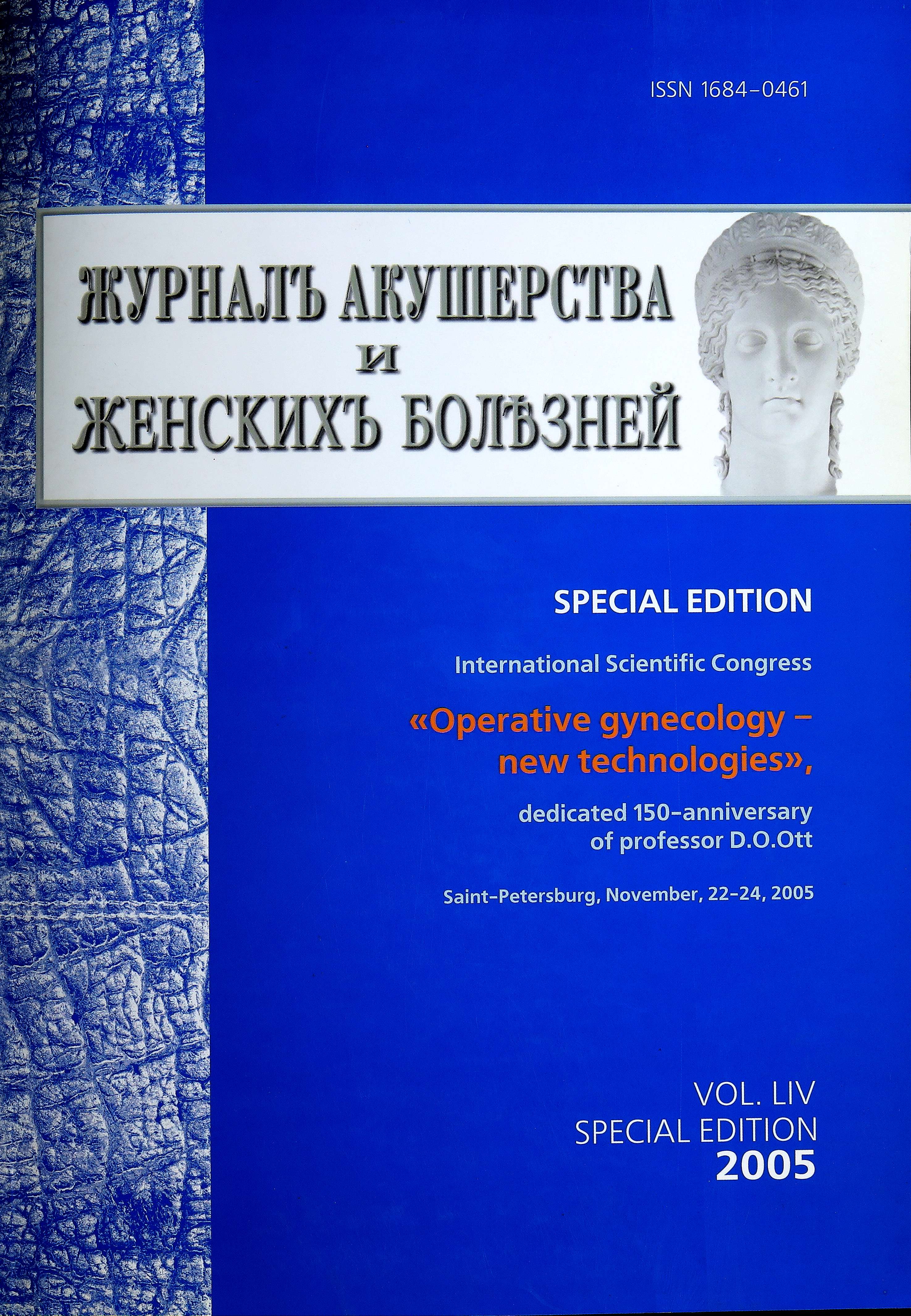The total laparoscopic hysterectomy - a modern route of hysterectomy. Is there a benefit?
- Authors: Holthaus В.1, Kletsel A.1, Mosel А.1, Regidor R.A.1
-
Affiliations:
- Klinikum Osnabrueck, University of Muenster
- Issue: Vol 54, No 5S (2005)
- Pages: 24a-24a
- Section: Reviews
- Submitted: 15.11.2005
- Published: 15.11.2005
- URL: https://journals.eco-vector.com/jowd/article/view/87227
- DOI: https://doi.org/10.17816/JOWD87227
- ID: 87227
Cite item
Full Text
Abstract
Objective: Total laparoscopic hysterectomy - a suitable approach to hysterectomy compared to the abdominal way.
Introduction. Hysterectomy is the most frequent surgery performed on female patients (approximately 70,000 per year in Germany). In more than 90% of the cases, it is indicated for benign disorders. In 1996 about 8% of the operation were done by laparoscopy, in 2002 it was done in about 12% of the cases. Only a very few recent publications focuses on per- and postoperative complications of the total laparoscopic hysterectomy. The advantage of the laparoscopic approach has been mainly associated with a short hospital stay and a quick convalescence. The object of this study was to list the advantage and the complications of the laparoscopic hysterectomy.
Keywords
Full Text
Objective: Total laparoscopic hysterectomy - a suitable approach to hysterectomy compared to the abdominal way. The aim of this retrospective study is to document the advantage of this technique and to show the complications.
Introduction. Hysterectomy is the most frequent surgery performed on female patients (approximately 70,000 per year in Germany). In more than 90% of the cases, it is indicated for benign disorders. In 1996 about 8% of the operation were done by laparoscopy, in 2002 it was done in about 12% of the cases. Only a very few recent publications focuses on per- and postoperative complications of the total laparoscopic hysterectomy. The advantage of the laparoscopic approach has been mainly associated with a short hospital stay and a quick convalescence. The object of this study was to list the advantage and the complications of the laparoscopic hysterectomy.
Materials and methods. We retrospectively studied more than 200 cases of laparoscopic hysterectomies for benign disorders between January 2003 and May 2005 in the Klinikum Osnabrueck - Germany. The procedures performed with 110mm trocar subumbilical and 25 mm trocars in the area of Mons pubis. Additionaly the manipulator for the uterus (Hohl - Karl Storz) was used.
Results. Due to the total laparoscopic hysterectomy the hospital stay, the operation time, the intraoperative bleeding and rate of complications were reduced compared with the abdominal approach. There were 2 bladder injuries, 1 intestinal injurie, 1 injurie of the ureter and 1 vesico-vaginal fistula. There was 1 deep venous thrombosis. There was no case of blood transfusion.
Conclusion. The total laparoscopic hysterectomy is a real alternative approach for the hysterectomy. Due to this technique the hospital stay was reduced and the complications are as high as in the other techniques.
About the authors
В. Holthaus
Klinikum Osnabrueck, University of Muenster
Email: info@eco-vector.com
Clinik of Obstetrics & Gynaecology
Germany, Nordrhein-Westfalen, MünsterA. Kletsel
Klinikum Osnabrueck, University of Muenster
Email: info@eco-vector.com
Clinik of Obstetrics & Gynaecology
Germany, Nordrhein-Westfalen, MünsterА. Mosel
Klinikum Osnabrueck, University of Muenster
Email: info@eco-vector.com
Clinik of Obstetrics & Gynaecology
Germany, Nordrhein-Westfalen, MünsterR. A. Regidor
Klinikum Osnabrueck, University of Muenster
Author for correspondence.
Email: info@eco-vector.com
Clinik of Obstetrics & Gynaecology
Germany, Nordrhein-Westfalen, MünsterReferences
Supplementary files







